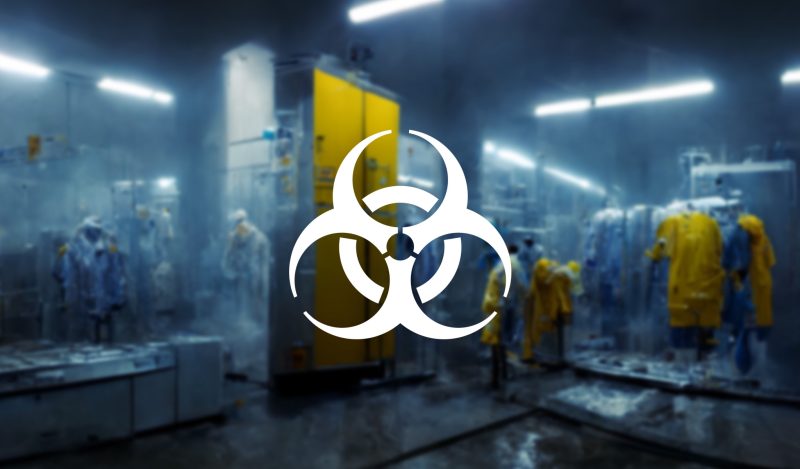One of the more shocking aspects to the war on effective covid treatments was the insolence of pharmacists and pharmacy boards to reject legally written prescriptions by properly credentialed doctors.
To justify pharmacists’ radical usurpation to practice medicine from the actual medical practitioners, pharmacists claimed – comically – that medications such as Hydroxychloroquine or Ivermectin were “unsafe” for someone infected with covid. This despite the proven track record of both drugs seen from billions of doses over decades of use.
This newfound ethos stands in stark contrast to the past decades of conventional pharmacist practice, where they freely filled prescriptions for opiates that are highly addictive and often cause severe addiction and sometimes lead to a life threatening overdose by the patient. There doesn’t seem to have ever been a publicly disseminated story about a pharmacist taking an ethical stand against filling an opioid prescription.
Let’s be generous and give them the benefit of the doubt. There are plenty of reasonable bases by which this obvious departure from prior standard practice can be rationalized. It is hard for individuals to take a stand by themselves, which for Ivermectin & HCQ was not the case as practically every major medical body came out strongly opposed to its use to treat covid.
Regardless of which specific drugs pharmacists regard with a wary eye, it must follow that if their conscience forecloses dispensing potentially toxic drugs, then they cannot under any circumstance fill concurrent prescriptions for multiple drugs that cannot be safely taken together. If rarely occurring speculative harms are a sufficient basis to usurp the judgement of a doctor and reject his prescription, then surely a demonstrated toxic cocktail is beyond the pale.
Or so you’d think.
Before getting into the details here, it is worth noting that harmful drug-on-drug interactions is actually one of a handful of valid reasons a pharmacist can refuse to fill an otherwise legitimate prescription. Per GoodRX:
You can usually rely on your pharmacist or healthcare provider to let you know if medications you take have any unsafe interactions. Not only do certain prescription medications interact dangerously with one another, but they can also interact with over-the-counter (OTC) medications, vitamin and mineral supplements, or even certain foods.
With that in mind, let’s take a look at the following recently published study:
Effect of Pharmacist Email Alerts on Concurrent Prescribing of Opioids and Benzodiazepines by Prescribers and Primary Care Managers
Reducing risky prescription behavior by doctors who seem oblivious to the pharmacological risks of coprescribing opioids and benzodiazepines (eg Valium, Xanax) is a noble endeavor. So noble in fact that it is perplexing how come the most obvious solution is rejected out of hand entirely without so much as a mention:
Abstract
Importance Policy makers have sought to discourage concurrent prescribing of opioids and benzodiazepines (coprescribing) because it is associated with overdose. Email alerts sent by pharmacists may reduce coprescribing, but this intervention lacks randomized evidence.
Objective To investigate whether pharmacist emails to practitioners caring for patients who recently received opioids and benzodiazepines reduce coprescribing of these medications.
Conclusions and Relevance In this randomized clinical trial of pharmacist emails to practitioners, email alerts failed to detectably reduce coprescribing, highlighting the value of alternative approaches. Combining randomization with quality improvement activities may help stakeholders seeking evidence-based interventions to encourage guideline-concordant care.
Introduction
During the past 2 decades, opioid overdoses and deaths have increased substantially in what is widely described as a public health crisis.1–4 Harms from benzodiazepines have followed a similar trajectory but have attracted less attention.5–7 These medications heighten opioid-induced respiratory depression, the cause of opioid overdose.8 Concurrent receipt of prescribed opioids and benzodiazepines is associated with adverse patient outcomes.9–11One-third to one-half of prescription opioid overdose deaths involve a benzodiazepine.12,13 In 2017, more than 1 in 5 patients prescribed an opioid also received a benzodiazepine.14,15 While this rate has declined in recent years, 3 million adults still receive concurrent prescriptions (coprescriptions) annually.16
These developments have led policy makers to discourage coprescribing of these medications. Recommendations to avoid coprescribing appear in guidelines from the Centers for Disease Control and Prevention and the Department of Veterans Affairs and the Department of Defense,17,18 Choosing Wisely guidance from the American Society of Anesthesiologists,19 and the Beers Criteria from the American Geriatrics Society.20 The US Food and Drug Administration also requires black box warnings about overdose on all opioid and benzodiazepine product labeling.21
The ongoing receipt of opioids and benzodiazepines together highlights the need for evidence-based approaches to encourage safer prescribing. Nudges, or interventions that seek to change behavior without directly limiting choices or changing incentives, provide one approach.22,23 There are several examples of successful opioid prescribing nudges, including peer comparison feedback on pills per opioid prescription,24 reduced default duration or quantity for new opioid prescriptions,25–28 and letters to practitioners informing them that one of their patients overdosed.29 Nudgelike interventions have also successfully reduced benzodiazepine prescribing.30,31 Nonrandomized studies of engaging pharmacists to deliver interventions to the rest of the care team have reported the interventions as effective strategies,32–34 as have clinical trials with pharmacists as participants in the intervention.31,35 Yet there is little randomized evidence on using nudges to decrease opioid-benzodiazepine coprescribing. Evidence is also lacking on whether including pharmacists in efforts to reduce coprescribing could make them more successful.
In other words:
- Opioids and benzodiazepines both individually have FDA black-box warnings – the highest level of FDA ☢️☢️☢️ labeling.
- Opioids and benzodiazepines taken together are a known cause of drug overdoses, ie the toxicity of these drugs combined is greater than the sum of their individual toxicities independently.
- Yet, “in 2017, more than 1 in 5 patients prescribed an opioid also received a benzodiazepine,” and “3 million adults still receive concurrent prescriptions (coprescriptions) annually.”
- Prescribing these at the same time for a patient is therefore officially discouraged because of the profound risks of toxic drug-on-drug interactions.
- This is such a glaring problem that there have been many [unsuccessful] attempts to figure out a way to get doctors to quit prescribing these together.
In light of current pharmacist ethical standards, the solution here should be pretty straightforward: pharmacists can simply refuse to fill concurrent prescriptions of opioids and benzodiazepines together, the same way they refuse to fill prescriptions for Ivermectin and HCQ if prescribed for covid.
Yet this option is completely absent from the study, something all the more mysterious considering that the study was trying to see if pharmacists could be recruited to help remediate the pressing issue of reducing dangerous prescribing tendencies of doctors. If contraindicated co-prescriptions are such a problem that pharmacists can email doctors to warn them “Hey, you’re prescribing opioids and benzos together, not a good idea,” then how can they in good conscience dispense this toxic lethally risky combo regardless of whether they can reach and convince the prescribing doctor? This is especially galling because the intervention the study tried did not work, so the acute urgency of this problem remains unresolved.
Were this still 2019, one could perhaps argue that “pharmacists can’t (or won’t) practice medicine.” But once pharmacists can refuse to fill an Ivermectin prescription for a patient with severe covid whose life is literally on the line because of speculative safety concerns, then they most definitely have an inviolable duty to not dispense a drug combo widely known and acknowledged to be highly toxic and often lethal.
In fact, the design of this study seems at least somewhat troubling. How can the study ethically allow pharmacists to knowingly fill coprescriptions for a pair of drugs that can cause profound harm if taken concurrently? It is one thing when the pharmacists themselves are not apprised or aware of the dangers of taking opioids with benzodiazepines, where they are not knowingly and willfully dispensing dangerous drug cocktails. It is another matter entirely when they are aware that they are filling a potentially lethal drug combo, and do so regardless.
At a minimum, this exposes the naked hypocrisy of the medical community, and pharmacists in particular. Any pharmacist who genuinely felt morally bound to refuse to fill legally prescribed Ivermectin or Hydroxychloroquine because of “safety concerns” would never fill prescriptions for a toxic combination of highly addictive drugs, a phenomenon acknowledged at all levels of the medical community as dangerous and problematic and for which there are ongoing efforts to eliminate because of its inherent profound and obvious peril to patient welfare and safety.
That pharmacists have no compunction in filling these dangerous coprescriptions demonstrates that this newfound ethical justification to reject legal prescriptions for drugs such as Ivermectin or HCQ is nothing more than a concocted lie, a “theory” that nobody actually ascribes to.
As a general rule, if someone truly cares about something, they will be proactive and aggressive about ensuring the viability, health or success of whatever it is that they prize, attentive to detail, and so on. When you care about something, your concern compels you to action on its behalf.
The FDA has a dedicated page titled “Preventable Adverse Drug Reactions: A Focus on Drug Interactions,” where they estimate potentially tens of thousands of deaths due to drug-on-drug interactions happen annually – not exactly a trifling issue.
If pharmacists were deeply invested in preventing patients from harming themselves by taking toxic medications, then we should see this manifest in their disposition and behavior generally.
So, are pharmacists vigilantly ensuring that patients do not accidentally end up taking home toxic combinations of drugs?
The Chicago Tribune decided to put this question to the test in 2013. They went out into the field and attempted to fill prescriptions for drugs that could not be safely taken together:
The Tribune reporter walked into an Evanston CVS pharmacy carrying two prescriptions: one for a common antibiotic, the other for a popular anti-cholesterol drug.
Taken alone, these two drugs, clarithromycin and simvastatin, are relatively safe. But taken together they can cause a severe breakdown in muscle tissue and lead to kidney failure and death.
When the reporter tried to fill the prescriptions, the pharmacist should have warned him of the dangers. But that’s not what happened. The two medications were packaged, labeled and sold within minutes, without a word of caution.
The same thing happened when a reporter presented prescriptions for a different potentially deadly drug pair at a Walgreens on the Magnificent Mile.
And at a Wal-Mart in Evergreen Park, a Jewel-Osco in River Forest and a Kmart in Springfield.
In the largest and most comprehensive study of its kind, the Tribune tested 255 pharmacies to see how often stores would dispense dangerous drug pairs without warning patients. Fifty-two percent of the pharmacies sold the medications without mentioning the potential interaction, striking evidence of an industrywide failure that places millions of consumers at risk.
CVS, the nation’s largest pharmacy retailer by store count, had the highest failure rate of any chain in the Tribune tests, dispensing the medications with no warning 63 percent of the time. Walgreens, one of CVS’ main competitors, had the lowest failure rate at 30 percent — but that’s still missing nearly 1 in 3 interactions.
In other words, pharmacists missed anywhere from 30% – 72% of potentially dangerous drug interactions. In other other words, pharmacists don’t seem particularly concerned with the toxicity of drugs they hand out to patients like candy.
In Sum:
Pharmacists will:
- ✔️ Fill prescriptions for medications without checking to see if the patient is on a different drug that is contraindicated to be taken together with the new drug
- ✔️Fill prescriptions for highly addictive opioids with black-box warning
- ✔️Fill coprescriptions for highly addictive opioids and benzodiazepines despite the acute risk of highly dangerous drug-drug interactions
- ❌ Fill prescriptions for Ivermectin or HCQ, two of the safest drugs ever developed if prescribed for an indication of covid
The only coherent principle here is the social and professional political incentives and/or ideology. Medical or ethical reasoning never had anything whatsoever to do with this.
Published under a Creative Commons Attribution 4.0 International License
For reprints, please set the canonical link back to the original Brownstone Institute Article and Author.









